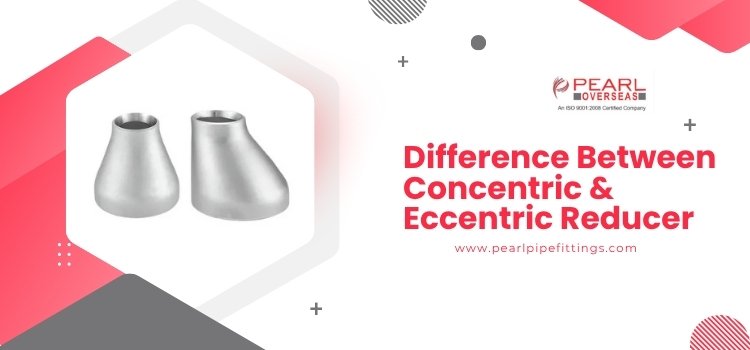
A Brief Comparison of Concentric and Eccentric Reducers
With the help of this guide, you will discover the difference between concentric and eccentric reducers and the way they are applied within the existing plumbing systems. The two categories are necessities that are required in the process of joining the pipes of varying dimensions and the facilitation of the free and smooth flow of the liquids. The form, the purpose, and the way of installation are various. Knowing how to operate a concentric or eccentric reducer will increase efficiency, safety, and reliability in industrial, HVAC, and plumbing applications. In this case, we shall be comparing the differences between concentric and eccentric reducers in terms of design, functionality, and their practical application.
What is a Concentric Reducer?
A concentric reducer is a single Stainless Steel pipe fitting that connects two pipes of different diameters but with the same centerline. It features a conical form, which allows the pipe to be reduced in size over time while still allowing fluid to pass smoothly.
Key Characteristics:
- Symmetrical design (central lines are aligned).
- Widely suitable for vertical pipes.
- Ideal for transporting non-turbulent liquids and gases.
Applications:
- Used in pump suction pipes.
- Applicable in systems where the flow must be continuous.
- HVAC lines can be found at water treatment plants and oil refineries.
What is an Eccentric Reducer?
An eccentric reducer connects pipes of different diameters with an offset centerline. The horizontal lines do not accumulate air because the reducer’s flat surface allows one side of the pipe to be level.
Key Characteristics:
- Asymmetrical design.
- Seals air leaks in horizontal pipelines.
- Ensures that the pipeline remains in a constant lower or upper location.
Applications:
- A common occurrence with horizontal pipelines.
- Used in pump suction to prevent cavitation.
- Best used with a slurry and fluid transfer line.
Difference Between Concentric and Eccentric Reducer
| Feature | Concentric Reducer | Eccentric Reducer |
|---|---|---|
| Shape | Cone-shaped | One side flat |
| Flow Direction | Smooth, centered flow | Offset flow to prevent air pockets |
| Best Used In | Vertical piping systems | Horizontal piping systems |
| Air Pocket Issue | May cause air accumulation | Prevents air or vapor buildup |
| Installation Position | Vertical lines | Horizontal lines |
| Applications | Pumps, compressors | Storage tanks, suction lines |
Why Choosing the Right Reducer Matters?
The type of reducer used allows for proper flow management, lowers turbulence, and eliminates the potential of equipment damage. The wrong decision can result in air lock, cavitation, or flow distribution.
Benefits include:
- Improved system efficiency.
- Reduced maintenance needs.
- Increased pipeline system life cycle.
How to Identify Concentric vs Eccentric Reducer Quickly?
- Check the centerline alignment. When it is aligned, it is concentric; otherwise, it is eccentric.
- Eccentric reducer types have a single flattened side, whereas conical reducers are concentric.
- One of the most important indicators is whether the installation is vertical or horizontal.
Costing of Concentric and Eccentric Reducers
The cost of concentric and eccentric reducers depends on many factors, among them the type of material, size of the reducer, thickness of the walls, manufacturing specifications, and surface quality. Concentric types of reducer are the cheaper type, as they are symmetrical and simpler to produce. Eccentric reducers are, however, expensive because of their offset construction, which must be constructed accurately to fit in the horizontal pipes.
The following factors influence pricing:
- The price depends on the materials used can be copper, stainless steel, carbon steel, and PVC.
- Size/thickness: The bigger the wall diameter and thickness, the more expensive it is.
- Manufacturing standards: Reducers that are produced to ASME, ASTM, or ISO standards or requirements might cost more.
- Quantity: Unit prices can be decreased by bulk purchases.
Conclusion
The distinction between concentric and eccentric reducers is an important issue in the design of an effective and dependable piping system. Whereas concentric reducers guarantee a smooth flow in vertical lines, the eccentric reducers eliminate air bubbles in horizontal systems. Selecting the appropriate type depending on the needs in the application prevents the loss of pressure, turbulence, and a longer service life of your equipment.
Looking for high-quality copper and stainless steel pipe fittings, including concentric and eccentric reducers? Email us at export@pearlpipeindia.com or contact us to get reliable solutions for your industrial piping needs.
